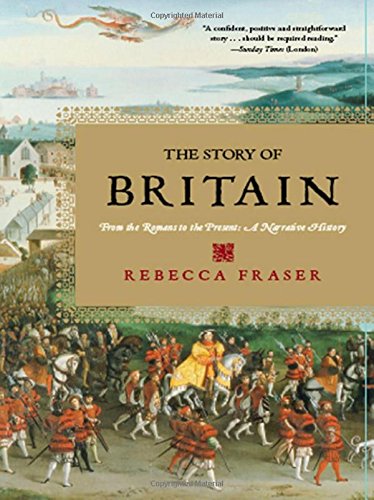

The Story of Britain: From the Romans to the Present: A Narrative History

“A beautifully written story, a box of delights, a treasure trove: final proof of truth’s superiority over fiction.”―Andrew Roberts
A sparkling anecdotal account with the pace of an epic, about the men and women who created turning points in history. Rebecca Fraser's dramatic portrayal of the scientists, statesmen, explorers, soldiers, traders, and artists who forged Britain's national institutions is the perfect introduction to British history.
Just as much as kings and queens, battles and empire, Britain's great themes have been the liberty of the individual, the rule of law, and the parliamentary democracy invented to protect them. Ever since Caractacus and Boudicca surprised the Romans with the bravery of their resistance, Britain has stood out as the home of freedom. From Thomas More to William Wilberforce, from Gladstone to Churchill, Britain's history is studded with heroic figures who have resisted tyranny in all its guises, whether it be the Stuart kings' belief in divine right, the institution of slavery, or the ambitions of Napoleon and Hitler. 154 illustrations
About the Author
Rebecca Fraser has worked as a researcher, an editor, and a journalist, and has written for many publications, including Tatler, Vogue, The Times, and The Spectator. She is the author of Charlotte Brontë and lives in England.
Paperback: 848 pages
Publisher: W. W. Norton & Company; Reprint edition (November 17, 2006)
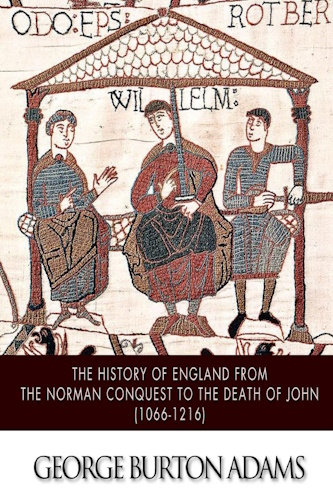

The History of England from the Norman Conquest to the Death of John (1066-1216)

“We, conquered by William, have liberated the Conqueror’s land”. So reads the memorial to the British war dead at Bayeaux, Normandy. Commemorating those who gave their lives to free France in 1944, it also serves to remind people of an earlier conflict. For the English, the Norman conquest remains deeply embedded in the national psyche. As the last contested military invasion to have succeeded in conquering this proud island nation, the date of 1066 is the one every citizen can remember. For them, William will forever be the “Conqueror”, the last invader to beat them in an open fight. For others, notably the French, he is the “Bastard”, a reference not only to his lineage. William’s conquest of the island arguably made him the most important figure in shaping the course of English history, but modern caricatures of this vitally important medieval figure are largely based on ignorance. William is a fascinating and complex figure, in many ways the quintessential warrior king of this period. Inheriting the Duchy of Normandy while still an infant and forced to fight for his domain almost ceaselessly during his early years, William went on to conquer and rule England, five times larger and three times wealthier. In doing so, he demonstrated sophisticated political and diplomatic skill, military prowess and administrative acumen. Although he lived by the sword, he was a devout man who had only one wife, to whom he remained faithful. However, peering back nearly 1,000 years to understand William does not just require a suspension of 21st century values and prejudices, because the evidence itself is far from complete. The historical record includes chronicles and documents, most notably the Anglo-Saxon Chronicle, the famous Domesday Book and the Bayeux tapestry, leaving scholars to attempt the meticulous and painstaking process of piecing together the narrative of his life and determining what William and the Normans might actually have been like. At the same time, those scholars are the first to admit the limitations of these abilities, since the few people who could write in medieval England and Normandy often had important agendas and prejudices of their own, or they were recording events decades after they occurred.
Paperback: 208 pages
Publisher: CreateSpace Independent Publishing Platform (June 15, 2014)
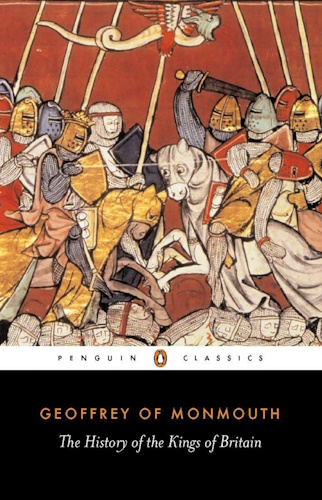

The History of the Kings of Britain (Penguin Classics)

Completed in 1136, this classic chronicle traces the story of the realm from its supposed foundation by Brutus to the coming of the Saxons some two thousand years later. Vividly portraying legendary and semi-legendary figures such as Lear, Cymbeline, Merlin the magician, and the most famous of all British heroes, King Arthur, it is as much myth as it is history, and its veracity was questioned by other medieval writers. But Geoffrey of Monmouth’s powerful evocation of illustrious men and deeds captured the imagination of subsequent generations, and his influence can be traced through the works of Malory, Shakespeare, Dryden, and Tennyson.
Lewis Thorpe’s translation from the Latin brings us an accurate and enthralling version of Geoffrey’s remarkable narrative. His introduction discusses in depth the aims of the author and his possible sources, and describes the impact of this work on British literature.
About the Author
Geoffrey of Monmouth was a Welsh cleric and British historiographer who lived during the twelfth century. He is best known for his chronicle The History of the Kings of Britain, which, though now considered historically unreliable, was widely popular in its day and is cited as an important work of national myth.
Lewis Thorpe was professor of French at Nottingham University from 1958 to 1977 and president of the British Branch of the International Arthurian Society. He published many books and articles on Arthur, both on the French and English traditions. He died in 1977.
Paperback: 384 pages
Publisher: Penguin Books; 1st edition (January 27, 1977)
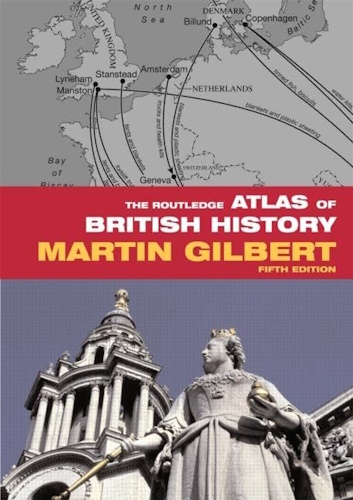

The Routledge Atlas of British History

The evolving story of the British Isles forms the central theme of this fascinating and compelling atlas, which covers England, Ireland, Scotland and Wales – and the expansion and gradual disintegration of Britain’s overseas empire. This new edition includes:
- Politics – from the Saxon kingdoms and the collapse of England’s French Empire to the Tudors and Stuarts, the English Civil War, the Restoration, Parliamentary Reform, the Commonwealth and Europe, the European Union and the Coalition Government formed in 2010
- War and conflict – from Viking attacks and the Norman Invasion to the Armada, two World Wars and the end of empire, the Falklands War, the Gulf War, British forces overseas, terror at home and the wars in Kosovo, Sierra Leone, Afghanistan and Iraq
- Trade and industry – from the post-Norman economy and Tudor trade to industrial unrest and the opening of international trade routes, imports and exports, arms sales and British humanitarian aid overseas
- Religion – from the Saxon Church to the Reformation and the multi-cultural Britain of modern times
- Society and economics – from civilian life in Roman Britain to the Industrial and Agricultural revolutions, the General Strike and the growth of universities, unemployment, homelessness, charitable activities and government expenditure
- Immigration – the growth of immigrant communities, the wide range of countries from which immigrants came, citizenship applications and citizenship granted.
Sir Martin Gilbert is Winston Churchill’s official biographer, and one of Britain’s leading historians, having written eighty-two books in total. He is an Honorary Fellow of Merton College, Oxford, and a Distinguished Fellow of Hillsdale College, Michigan. He has also most recently served on the committee of the Iraq Inquiry set up by the British Government. For more information, please visit www.martingilbert.com.
About the Author
Sir Martin Gilbert is Winston Churchill’s official biographer, and one of Britain’s leading historians, having written eighty-two books in total. He is an Honorary Fellow of Merton College, Oxford, and a Distinguished Fellow of Hillsdale College, Michigan. He has also most recently served on the committee of the Iraq Inquiry set up by the British Government. For more information, please visit www.martingilbert.com.
Paperback: 224 pages
Publisher: Routledge; 5 edition (May 27, 2011)
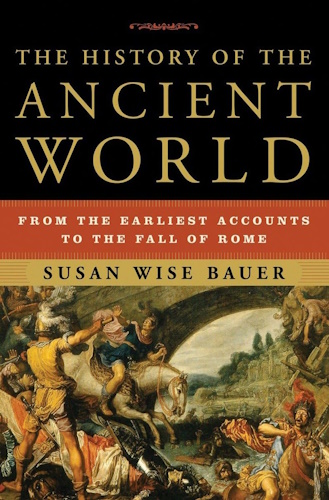

The History of the Ancient World: From the Earliest Accounts to the Fall of Rome

A lively and engaging narrative history showing the common threads in the cultures that gave birth to our own.
This is the first volume in a bold new series that tells the stories of all peoples, connecting historical events from Europe to the Middle East to the far coast of China, while still giving weight to the characteristics of each country. Susan Wise Bauer provides both sweeping scope and vivid attention to the individual lives that give flesh to abstract assertions about human history.
Dozens of maps provide a clear geography of great events, while timelines give the reader an ongoing sense of the passage of years and cultural interconnection. This old-fashioned narrative history employs the methods of “history from beneath”―literature, epic traditions, private letters and accounts―to connect kings and leaders with the lives of those they ruled. The result is an engrossing tapestry of human behavior from which we may draw conclusions about the direction of world events and the causes behind them.
13 illustrations, 80 maps
Hardcover: 896 pages
Publisher: W. W. Norton & Company; 1 edition (March 17, 2007)
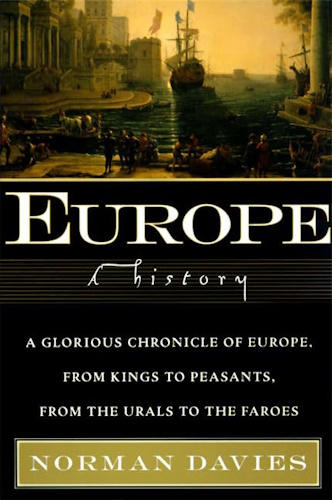

Here is a masterpiece of historical narrative that stretches from the Ice Age to the Atomic Age, as it tells the story of Europe, East and West. Norman Davies captures it all-the rise and fall of Rome, the sweeping invasions of Alaric and Atilla, the Norman Conquests, the Papal struggles for power, the Renaissance and the Reformation, the French Revolution and the Napoleonic Wars, Europe's rise to become the powerhouse of the world, and its eclipse in our own century, following two devastating World Wars. This is the first major history of Europe to give equal weight to both East and West, and it shines light on fascinating minority communities, from heretics and lepers to Gypsies, Jews, and Muslims. It also takes an innovative approach, combining traditional narrative with unique features that help bring history alive: 299 time capsules scattered through the narrative capture telling aspects of an era. 12 -snapshots offer a panoramic look at all of Europe at a particular moment in history. Full coverage of Eastern Europe—100 maps and diagrams, 72 black-and-white plates.All told, Davies’'s Europe represents one of the most important and illuminating histories to be published in recent years.
Paperback: 1392 pages
Publisher: Harper Perennial (January 20, 1998)
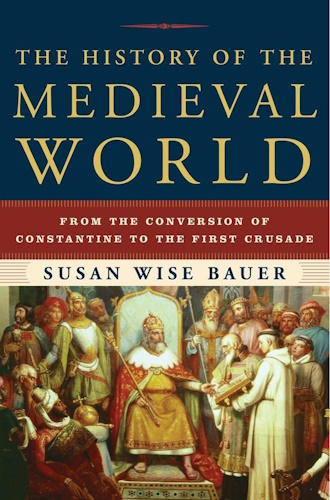

The History of the Medieval World: From the Conversion of Constantine to the First Crusade

A masterful narrative of the Middle Ages, when religion became a weapon for kings all over the world.
From the schism between Rome and Constantinople to the rise of the T’ang Dynasty, from the birth of Muhammad to the crowning of Charlemagne, this erudite book tells the fascinating, often violent story of kings, generals, and the peoples they ruled.
In her earlier work, The History of the Ancient World, Susan Wise Bauer wrote of the rise of kingship based on might. But in the years between the fourth and the twelfth centuries, rulers had to find new justification for their power, and they turned to divine truth or grace to justify political and military action. Right thus replaces might as the engine of empire.
Not just Christianity and Islam but the religions of the Persians and the Germans, and even Buddhism, are pressed into the service of the state. This phenomenon―stretching from the Americas all the way to Japan―changes religion, but it also changes the state. 4 illustrations; 46 maps
Hardcover: 768 pages
Publisher: W. W. Norton & Company; 1 edition (February 22, 2010)
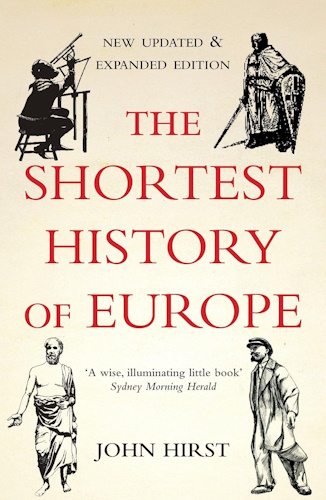

The Shortest History of Europe

In The Shortest History of Europe, John Hirst takes us on a fascinating journey through antiquity, the Middle Ages and beyond, bringing European civilisation to life in all its peculiarity and exuberance. Beginning with Greek and Roman learning, Judeo-Christian religion and a Germanic warrior culture, it discusses how this unlikely alliance at the heart of European civilisation came about, producing empires and city-states, inspiring conquests and crusades, and giving rise to such figures as benign emperors, belligerent popes, chivalrous knights and enlightened citizens. Accompanied by lively illustrations and related with clarity and wit, The Shortest History of Europe tells the remarkable story of our shared civilisation.
About the Author
John Hirst is a widely respected historian and social commentator. A former reader in history at La Trobe University, he is a member of the Film Australia Board and the National Museum council. He is the author of numerous books, including The Sentimental Nation, A Republican Manifesto, Australia's Democracy: A Short History, The Australians: Insiders and Outsiders on the National Character since 1770 and Freedom on the Fatal Shore: Australia's First Colony. --This text refers to an out of print or unavailable edition of this title.
Paperback: 203 pages
Publisher: Old Street Publishing (September 4, 2012)
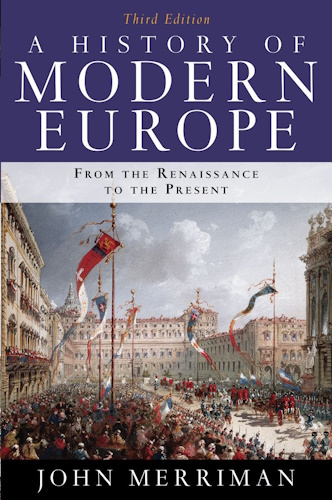

A History of Modern Europe: From the Renaissance to the Present, 3rd Edition

A classic in its field, loved by instructors and students for its narrative flair, humor, authority, and comprehensive coverage. More than 100,000 copies sold!
Available in both one-volume and two-volume paperback editions, A History of Modern Europe presents a panoramic survey of modern Europe from the Renaissance to the present day. A single author lends a unified approach and consistent style throughout, with an emphasis on the connections of events and people over time.
The Third Edition, like the two before it, is authoritative and up-to-date. New to the Third Edition is the theme of empire. From the imperial rivalries between France and Spain in the sixteenth and seventeenth centuries, through the rise and fall of the Ottoman Turkish empire, and on into the imperial history of the twentieth century―decolonization, the spread of the Soviet empire, and the imperial power of the United States―the theme of empire helps students find commonalities among the events of European history.
About the Author
John Merriman is the Charles Seymour Professor of History at Yale University. A specialist in nineteenth century French history, Merriman earned his Ph. D at the University of Michigan. He is the author of many books, including The Margins of City Life: Explorations on the French Urban Frontier, 1815–1851; Red City: Limoges and the French Nineteenth Century; The Agony of the Republic: The Repression of the Left in Revolutionary France, 1848–1851; and, most recently, The Stones of Balazuc: A French Village in Time (Norton, 2002). He regularly teaches the survey of modern European history at Yale.
Paperback: 1342 pages
Publisher: W. W. Norton & Company; 3rd edition (September 29, 2009)
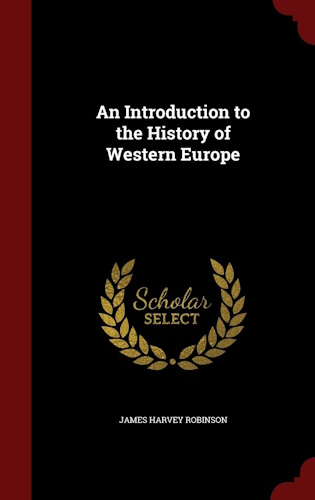

An Introduction to the History of Western Europe

This work has been selected by scholars as being culturally important, and is part of the knowledge base of civilization as we know it. This work was reproduced from the original artifact, and remains as true to the original work as possible. Therefore, you will see the original copyright references, library stamps (as most of these works have been housed in our most important libraries around the world), and other notations in the work.
This work is in the public domain in the United States of America, and possibly other nations. Within the United States, you may freely copy and distribute this work, as no entity (individual or corporate) has a copyright on the body of the work.
As a reproduction of a historical artifact, this work may contain missing or blurred pages, poor pictures, errant marks, etc. Scholars believe, and we concur, that this work is important enough to be preserved, reproduced, and made generally available to the public. We appreciate your support of the preservation process, and thank you for being an important part of keeping this knowledge alive and relevant.
Hardcover: 890 pages
Publisher: Andesite Press (August 8, 2015)
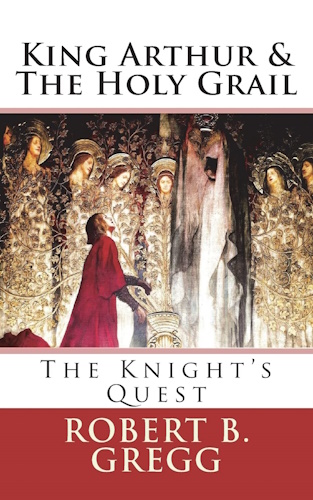

King Arthur and The Holy Grail: The Knight's Quest

King Arthur & The Holy Grail vividly tells the story of the greatest adventure in history. As with other epics, Gregg’s illusory world is filled with strong moral conflict. Ride with King Arthur and the Knights of the Round Table as they battle the evil Saxons, led by Lord Goron, in a deadly quest to rescue the Fisher King and The Holy Grail, Christ’s Cup from the Last Supper. Live the twists and turns, plots and counterplots, tragedy and betrayal, victory and defeat, and the terror of demons, phantoms, dragons, and the Devil himself as they try to stop Arthur and his men of the round table as they race against evil in a quest for the most powerful relic in Christendom. This is a story of kings and queens, knights and maidens, wizards and witches, assassins and saints, hate and love. And, in a spectacular finish, the age-old question, “Where is the Holy Grail?” is finally answered.
Paperback: 472 pages
Publisher: CreateSpace Independent Publishing Platform (November 20, 2017)
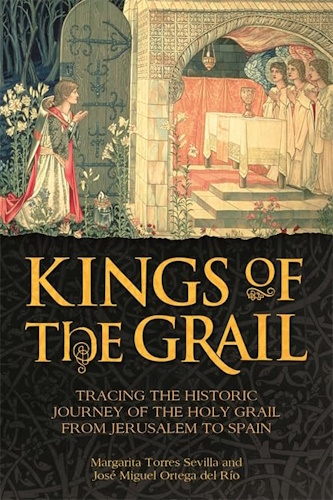

The Kings of the Grail: Tracing the Historic Journey of the Holy Grail from Jerusalem to Spain

Recently discovered parchments in the Egyptian University of Al-Azhar have finally made it possible to retrace the spot where the Holy Grail has been kept for the last 1,000 years.
The authors, a medieval history lecturer and an art historian, came across the clues leading to the Grail's discovery by chance when carrying out research in Cairo. The evidence in the ancient Egyptian parchments led them on a three-year investigation as they traced the Grail's journey across the globe and discovered its final resting place in the Basilica of San Isidoro in León, Spain.
This is the definitive guide to one of history's most sought-after treasures, the origin and object of both Arthurian myth and Christian legend, offering objective information to support an extraordinary discovery, and looks back at the origins of Judaism and Catholicism, the significance of the Last Supper, and relics previously associated with the Grail.
The Kings of the Grail presents the new, definitive historical and scientific facts that have come to light, unravelling the mystery that has surrounded the Holy Grail and taking the reader on a compelling and thought-provoking journey.
Hardcover: 256 pages
Publisher: Michael O'Mara Books Ltd
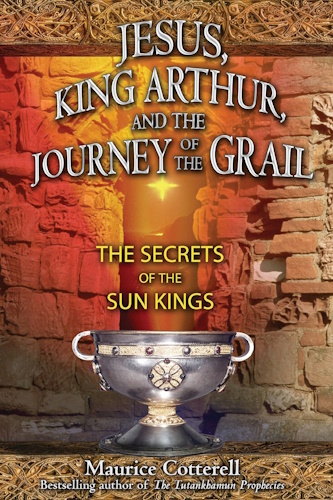

Jesus, King Arthur, and the Journey of the Grail: The Secrets of the Sun Kings

From the Back Cover
ANCIENT MYSTERIES / CELTIC STUDIES
Using the same knowledge that enabled him to break the codes of the Mayas, Peruvians, Egyptians, and Chinese, Maurice Cotterell now follows the migration of the Celts 4,000 years ago from Asia, across Europe, to Ireland. His account of this epic journey together with his knowledge of the secret codes of the Celts help him to identify and locate the Holy Grail, the actual cup used by Christ and his disciples at the Last Supper.
The author explains the true story of the Grail: how it contains the secret super-science of the sun and the higher orders of spirituality; how it was carried to England by Joseph of Arimathea; how in AD 453 it was found by King Arthur, who engraved it with the same esoteric information found on the Pyramid of Inscriptions in Palenque, Mexico, and the Gateway of the Sun at Tiahuanaco in ancient Peru. His discoveries reveal that the Grail does actually radiate light, in accordance with the Arthurian legends, proving that the so-called legends are actually based on fact. The author goes on to show how the holy cup was passed for safekeeping to the monks of Lindisfarne, who copied the secrets of the Grail into the Lindisfarne Gospels and the Book of Kells. Fleeing from Viking raids, the monks carried their treasures to Ireland, explaining how the cup found its way to the Dublin Museum--where it rests today.
MAURICE COTTERELL is the bestselling author of The Tutankhamun Prophecies, The Mayan Prophecies, The Lost Tomb of Viracocha, and The Terracotta Warriors. He lives in Ireland.
Paperback: 280 pages
Publisher: Bear & Company (April 18, 2006)
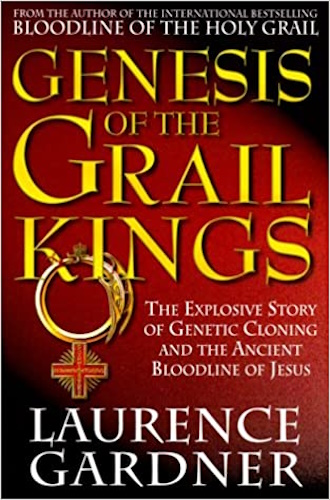

Genesis of the Grail Kings: The Explosive Story of Genetic Cloning and the Ancient Bloodline of Jesus

The author explores the interconnected myth and geneology revealed by Biblical texts, Sumerian cuniforms, and Egyptian hieroglyphics to uncover the distant origins of Christianity and humankind.
About the Author
Sir Laurence Gardner is the Jacobite Historiographer Royal, and an internationally known sovereign and chivalric genealogist. Distinguished as the Chevalier Labhran de St. Germain, he is Presidential Attache to the European Council of Princes. He is formally attached to the Nobel Household Guard of the Royal House of Stewart and is Chancellor of the Imperial and Royal Court of the Dragon Sovereignty.
Hardcover: 316 pages
Publisher: Element Books Ltd; 1st Printing edition (February 1, 2000)
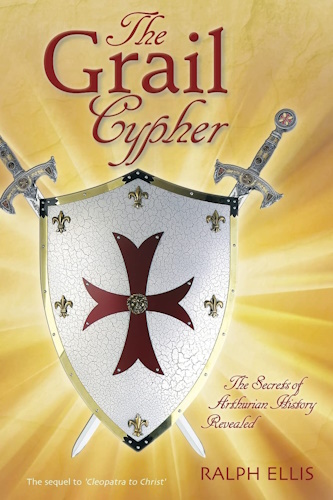

The Grail Cypher: The Secrets of Arthurian History Revealed (King Jesus Trilogy) Vol. 4

A radical reassessment of Arthurian history by Ralph Ellis
- • The history of King Arthur was modeled upon the life of Jesus.
- • Jesus-Arthur had twelve disciple-knights of the Round (Last Supper) Table.
- • The son of Jesus-Arthur was the king of Palmyra in Syria.
This is the most comprehensive and radical reassessment of Arthurian history ever undertaken. The conclusion is that the Classical Arthur did not exist. This is why there is no mention of King Arthur for nearly 600 years, until the early 12th century. It was only when Templar Crusaders returned to Normandy from Syria and Judaea, that the Arthurian genre was born.
Why?
Because in reality, King Arthur was the alter ego for the biblical King Jesus of Judaea (and Edessa). The Templar Crusaders had discovered a manuscript in Syria detailing the true monarchal and martial life of King Jesus and his family. But this revised history was decidedly heretical and positively dangerous. Being unable to record and preserve this history directly, the Norman Templars crafted an alternate pseudo-history about a 'British' monarch called King Arthur.
This is a comprehensive analysis of all Arthurian literature, and includes explanations for the many tangential stories within Arthurian history, including:
- • St. Peter as the Guardian of the Holy Grail
- • Pompey the Great and the pirates of Gibraltar
- • Secrets of Mithras and the bull of Taurus
- • King Arthur’s battle with Vespasian
- • The Roman creation of Christianity
- • The Holy Grail brought to Earth by aliens
- • Sir Galahad dressed as a woman (really!)
- • The burial of Jesus-Arthur at Stonehenge
V 1.8
The ‘King Jesus Trilogy’ includes:
- Cleopatra to Christ
- King Jesus
- Jesus, King of Edessa
- ....... and now .......The Grail Cypher
Series: King Jesus Trilogy (Book 4)
Paperback: 672 pages
Publisher: CreateSpace Independent Publishing Platform; V1.2 edition (September 18, 2015)
![]()
![]()